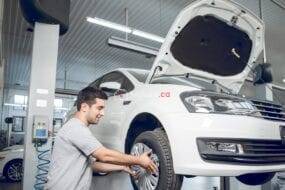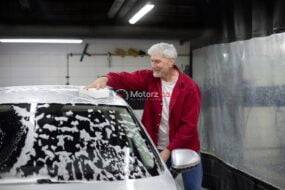From Concept to Reality Upcoming Car Prototypes and Concepts innovation is an ever-evolving landscape, where designers and engineers constantly push the boundaries of what’s possible. From futuristic concept cars that dazzle with their bold designs to prototypes that hint at the future of transportation, the automotive industry is a hotbed of creativity and innovation. In this article, we’ll delve into the exciting world of Upcoming Car prototypes and concepts, exploring how these visionary ideas evolve from concept to reality.
Concept Cars A Glimpse into the Future
Concept cars are the automotive industry’s equivalent of runway fashion shows, where automakers showcase their most ambitious and innovative ideas. These visionary vehicles serve as a canvas for designers to experiment with cutting-edge technologies, innovative materials, and avant-garde designs. Concept cars are often unveiled at major auto shows, capturing the imagination of enthusiasts and setting the tone for the future of the industry.
Design Innovation
Upcoming Car One of the primary purposes of concept cars is to push the boundaries of design. These vehicles often feature radical designs that challenge conventional notions of aesthetics. For example, the Mercedes-Benz Vision EQ Silver Arrow concept wowed audiences with its sleek, futuristic design, inspired by the brand’s iconic Silver Arrow racing cars of the past.This process can take several years, and not all concept cars make it to production. However, for those that do, the results can be groundbreaking.
Technological Advancements
Concept cars also serve as testbeds for emerging technologies. From electric and autonomous driving systems to advanced connectivity features, these vehicles often showcase what’s possible in terms of innovation. The Audi Aico concept, for instance, introduced a vision of fully autonomous driving and a spacious, lounge-like interior.Coordinating the supply chain for parts and materials is a crucial aspect of bringing a concept car to production. Automakers must secure reliable sources for components and establish efficient manufacturing processes.
Environmental Responsibility
As sustainability becomes increasingly important, concept cars frequently explore eco-friendly technologies. The Volkswagen ID. Buggy concept, an electric off-road vehicle, exemplifies this trend, demonstrating how electric power can be applied to off-road adventures without harming the environment.
Prototypes Bridging the Gap between Concept and Reality
While concept cars are meant to inspire and captivate, prototypes are the bridge between these fantastical designs and the vehicles that eventually make it to the market. Prototypes are working models that help engineers and designers refine their concepts, test technologies, and ensure that a vehicle can meet safety and performance standards.
Engineering Challenges
Building a prototype often reveals unforeseen engineering challenges that need to be overcome. For example, the Tesla Cybertruck prototype initially encountered difficulties with its unconventional stainless-steel exoskeleton, leading to revisions before production. Prototypes undergo rigorous real-world testing, including durability trials, crash tests, and performance assessments. These tests ensure that the vehicle meets safety and performance standards, helping to identify and resolve issues before mass production begins.
Iterative Development
Prototyping is an iterative process. Engineers continually refine the design and technology, using feedback from prototypes to make improvements. This process can take months or even years, as seen with the development of self-driving prototypes like those from WeMo and Cruise. Transitioning from concept to reality is a complex and multifaceted journey that involves numerous stakeholders, including designers, engineers, manufacturers, and regulators.
Production Engineering
Upcoming Car Once a prototype proves the feasibility of a concept, production engineers take over. They adapt the design for mass production, ensuring that it can be manufactured efficiently and cost-effectively. Vehicles must meet strict safety and emissions regulations before they can be sold to the public. This often requires additional testing and modifications to ensure compliance.
Market Research
Throughout this process, automakers conduct market research to understand consumer preferences and market trends. This information helps refine the final product to meet customer expectations. Once a vehicle is ready for production, automakers embark on extensive marketing campaigns to build anticipation and generate sales. Launch events and promotional activities are key components of this phase.
Conclusion
The journey from Upcoming Car Prototypes and Concepts in the automotive industry is a fascinating one, marked by creativity, innovation, and perseverance. Concept cars offer a glimpse into the future of transportation, pushing the boundaries of design and technology. Prototypes bridge the gap between these visionary concepts and production vehicles, undergoing rigorous testing and refinement. Finally, when a concept car becomes a reality, it represents the culmination of years of hard work and collaboration among teams of talented individuals.
About Innovations in Car Lighting
From Concept to Upcoming Car
Reality of Upcoming Car
Upcoming Car Advancements






